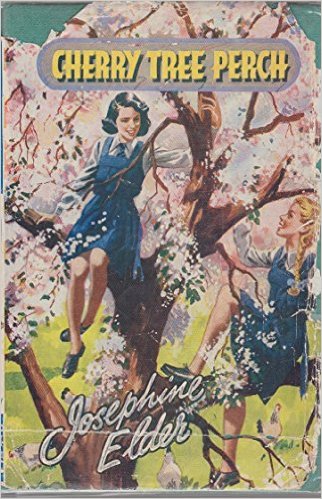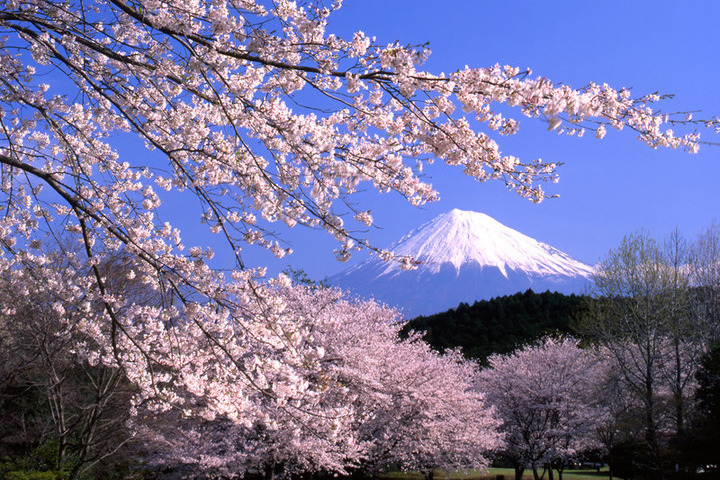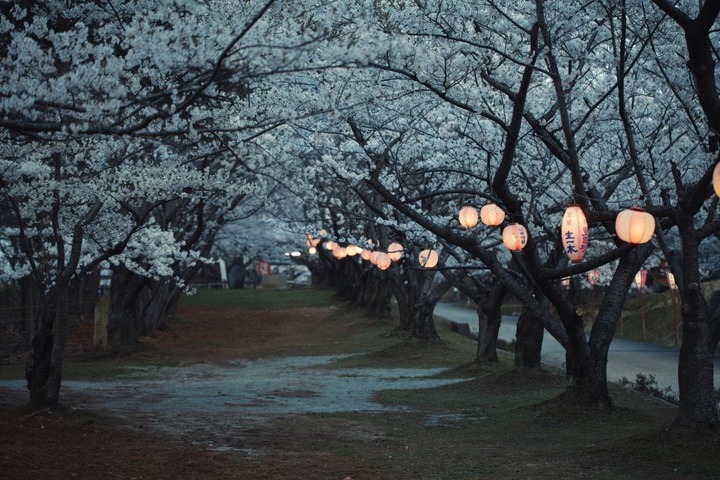PLUS WHAT TO DO WITH A BAG OF SPANISH MOSS?
 Plump citrus yellow Cymbidium flowers just opening at McBean’s Orchids
Plump citrus yellow Cymbidium flowers just opening at McBean’s Orchids
 Glamorous, particularly fine Oncidium plants at McBean’s Orchids
Glamorous, particularly fine Oncidium plants at McBean’s Orchids
The scent is extraordinary – vanilla? clove? tuberose? Exotic of course, from far away. It is outrageously seductive. I have only just stepped out of an exhilaratingly frosty December day and into the first of a series of milky-paned glasshouses at McBean’s Orchids in East Sussex and already I find myself wanting more of the intense perfume, coveting an exquisitely salmon-marbled Oncidium and wondering simply where orchids have been all my life?
 Just opening claret coloured Cymbidium in the glasshouse at McBean’s Orchids, East Sussex
Just opening claret coloured Cymbidium in the glasshouse at McBean’s Orchids, East Sussex
 Exquisite salmon-marbled oncidium, Mcbean’s Orchids, Sussex
Exquisite salmon-marbled oncidium, Mcbean’s Orchids, Sussex
I love the energy of the Cymbidium leaves:
 Yellow flowered Cymbidium its leaves stretching upwards and outwards.
Yellow flowered Cymbidium its leaves stretching upwards and outwards.
There are orchids everywhere in a series of greenhouses, stretching away on long wheeled tables. wheeled tables stretching away into the distance, McBean’s Orchids
wheeled tables stretching away into the distance, McBean’s Orchids
There are junior plants dense in their trays (it takes four to five years to nurture an orchid until it is ready for sale). Tray upon tray of tiny orchid plants, McBean’s Orchids
Tray upon tray of tiny orchid plants, McBean’s Orchids
There are teenage ones, signposted with delightfully incongruous Scottish names such as ‘Castle of Mey’ – never forget that Mr McBean, who established the nursery in 1879, was a Scot. Originally the business specialised in ferns but Mr McBean was canny enough to spot the potential of the seedling orchids that appeared uninvited on imported fern plants and so the revered orchid nursery began.
 Young Cymbidium ‘Castle of Mey’
Young Cymbidium ‘Castle of Mey’
And there are champion ones such as ‘Big Tracy’, a 40 year old sweet smelling Cymbidium tracyanum with pistachio coloured flowers marked with brown. Every year there is a playful flower-count as the plant grows even bigger. 2016 has been a bumper year with 630 translucent tiger-striped blooms.



 The enormous 40+ year old ‘Big Tracy’ – Cymbidium tracyanum – at McBean’s Orchids
The enormous 40+ year old ‘Big Tracy’ – Cymbidium tracyanum – at McBean’s Orchids
It has been a wonderfully crisp and blue-skied early winter here in London and the South East. There have been freezing nights followed by glittering early mornings which have transformed the spreading leaves of cardoons and the sculpted mounts of Euphorbia characias in my local Ruskin Park into exquisitely shimmering ball gowns:
 Gorgeous frosted leaves of cardoons and Euphorbia characias
Gorgeous frosted leaves of cardoons and Euphorbia characias
Sheets of Cyclamen hederfolium huddled in the grass are frozen solid, the frost lacing the slightly puckered marbled leaves with an icy pompom edging.
 Frozen Cyclamen hederifolium
Frozen Cyclamen hederifolium
Stands of Calamagrostis are ablaze in the morning sunshine and the still-hanging-in-there, rich yellow festoons of wisteria foliage make for a slightly decadent party atmosphere.
 Stands of Calamagrostis ablaze in the morning sunshine
Stands of Calamagrostis ablaze in the morning sunshine
 Festoons of rich yellow wisteria foliage make for a slightly decadent party atmosphere
Festoons of rich yellow wisteria foliage make for a slightly decadent party atmosphere
Back at McBean’s my spirits rise as I find out more about their speciality Cymbidium and Oncidium orchids and how they could fill my house with colour from December until April just as the garden has gone so quiet. Above the exuberant light-catching foliage there are bursts of speckled pink, an elusive grey-orange, white with dashes of the freshest egg yolk yellow and spotted claret and pink ones ones like slivers of the most expensive Italian marble.
 Cymbidium December Orange
Cymbidium December Orange
 An arching stem of yellow Cymbidium
An arching stem of yellow Cymbidium
Cool growing Oncidium (formerly know as Odontoglossum) and modern hybrid Cymbidium hail from subtropical Asia and were hugely popular in Victorian times. But they have been lying quietly beyond the contemporary mindset, our interest dulled by the elegant but supermarket invading moth orchid (Phaelonopsis). Not that McBean’s does not sell tempting, strangely speckled or dark wine coloured Phalaenopsis too, but their speciality and comparative rarity lies in their range of gorgeous, exuberant Cymbidium and the more delicate and only slightly more challenging Oncidium. A perfectly poised stem of deep pink Oncidium
A perfectly poised stem of deep pink Oncidium
 A prize Oncidium with marble-like markings in claret.
A prize Oncidium with marble-like markings in claret.
‘They are the ultimate sustainable plant’ explains the feisty Rose Armstrong as she takes me on an uplifting tour of the nursery which she bought – pretty much by accident – in 2015. Rose had been coming to McBeans for years. On a visit to buy an orchid as a present she was distraught to find that the business was on the verge of closing down, and found herself buying the whole set up (along with her headhunter husband, Stretch) and taking on the task of saving and reviving this longstanding British brand. ‘McBeans have exhibited at nearly every Chelsea Flower show and have won over 80 gold medals. We are one of only three remaining British orchid nurseries, we have an incredible stock to breed from and unbeatable expertise.’ Indeed Head Nurseryman, Jim Durrant has worked at the nursery developing ever more exquisite plants since 1971.
McBean’s has provided orchids for Royalty – famously for Princess Diana’s wedding bouquet – Mrs Thatcher is said to have insisted on McBean’s orchids at No. 10 and there are still a handful of country house chatelaines who order several thousand pounds worth of orchids to decorate the house before a shooting party, but Rose is determined that the McBean orchid – the less well known cymbidiums and oncidiums in particular – are seen as a straightforward and cheerful addition to any contemporary home.

Princess Diana’s wedding – her bouquet contained trailing stems of white orchids from McBean’s
I think Rose Armstrong has the right ingredients to make this work. She has a great eye and orchids are in her bones: amazingly both her grandmothers used to come to Mcbean’s in the autumn to buy orchids for the house. She is also refreshingly straightforward in her approach to the task ahead. She tells me fondly that her other business is a petrol station with a small, perhaps old-fashioned, but perfectly successful shop ‘that just sells what you need when you’ve got a hangover after Saturday night: ‘Redbull, fags … and sauces for Sunday lunch’.
Most importantly her approach to caring for orchids dispels the kind of myths that may have built up in your head for years. You may have stored away information gathered from pieces such as Amanda Gutterman’s entertaining but worrying feature for Gardensita – The Orchid That Owned Me – in which Ms Gutterman achieves success by watering her orchids with gently melting ice cubes: the ultimate way to ‘water sparingly’.
 Photograph of the melting ice cube orchid-watering technique by Amanda Gutterman courtesy of Gardenista
Photograph of the melting ice cube orchid-watering technique by Amanda Gutterman courtesy of Gardenista
But for Rose Armstrong the advice is much more straight forward. ‘Rule no 1 is to water with rainwater only – just keep a lemonade bottle of rainwater mixed with Orchid feed under the sink and use this every three out of four times you water’.

Rule 2: Don’t water very much (use a wooden stick poked in the potting medium to see if there is still moisture available), and put a layer of gravel under the pot to help drainage and keep the atmosphere around the plant moist. Rule 3: Keep the plant in good light but not direct sunlight away from radiators and draughts. Rule 4: In the summer (April to October) put the plant outside in dappled shade ‘under the apple tree at the back of the garden’ . The plant needs a drop in temperature at night to form buds. You can keep watering and feeding a bit during this time but not in July when the bud formation is taking place.
The really exciting thing about orchids of course is that as well as flowering for at least six to eight weeks, they will come back again year after year. Some people worry that they will get too big but ‘it is easy to split them in two with a hacksaw’ – with the obvious bonus of creating two plants from one.
 Mature Cymbidium tracyanum on a trunk at McBean’s Orchids
Mature Cymbidium tracyanum on a trunk at McBean’s Orchids
I love the way that even the smaller cymbidiums have the potential to really change a room, the way they offer something of the settled quality of a log fire or a piano. And the bigger plants can be spectacular. At McBean’s there is a particularly covetable, heavenly scented Cymbidium tracyanum comfortable on an old trunk at the end of a sloping red-floored passageway in the nursery against an industrial painted glass wall.
The red-floored passageway leads to the Exhibition Room. This is an extraordinarily atmospheric stage set of a place with a backdrop of futuristic, silvery-grey corrugated window panes, waterfalls, pools, scented tumbling orchids amongst ferns and tiered stands of velvety green, ear-shaped begonia leaves – the whole hung with ghostly festoons of Spanish moss (Tillandsia usneoides). I have only ever seen Spanish Moss before hanging spookily from gnarled trees in the ground of plantation houses outside New Orleans. Here the Spanish moss is cool and airy and a curiously refreshing foil to the glossy firework exuberance of the tropical plants.








 The amazing Exhibition Room with pools, waterfalls, scented orchids, begonias, ferns and Spanish moss.
The amazing Exhibition Room with pools, waterfalls, scented orchids, begonias, ferns and Spanish moss.
Elsewhere in the nursery I am taken by further sturdily voluptuous plants against milky blue glass (am feeling an urgent need to expand my knowledge of a whole new area of plants!)
 Sturdily voluptuous plants against pale blue glass
Sturdily voluptuous plants against pale blue glass
And everywhere there are workbenches with new treasures. I fall for a wonderful table laden with gawky, long-limbed shrimp plants (Judicia brandegeeana ), Blue Rabbit’s Foot fern (Phlebodum pseudoareum) – and more Spanish moss:

 A potting bench where Shrimp plant cuttings share space with Spanish moss and a Blue Rabbit’s Foot fern
A potting bench where Shrimp plant cuttings share space with Spanish moss and a Blue Rabbit’s Foot fern
On the next table I am introduced to the slim and elegant mahogany flowered Cymbidium ‘Prince George’ and his neat, smaller younger sister ‘Princess Charlotte’
 Cymbidium ‘Prince George’ and ‘Princess Charlotte’
Cymbidium ‘Prince George’ and ‘Princess Charlotte’ Cymbidium ‘Prince George’
Cymbidium ‘Prince George’
And so I am back in the sales area and in a mild panic about what to buy. 

 The all too tempting sales area at McBeans’s Orchids
The all too tempting sales area at McBeans’s Orchids
I go for a starter trio of Cymbidium ‘December Orange’, a soft pink speckled Cymbidium ‘McBean’s Loch Gilp Lewes’ and an Oncidium with magically suspended delicate pink on white flowers along a curved stem – just to raise the stakes.
 My trio of orchids arrive home.
My trio of orchids arrive home.
I have a Malaysian friend, Valentine Willie who deals in contemporary art and has bases throughout Southeast Asia. He is crazy about orchids and I have always assumed that it is all very well for him – after all he will goad me with photographs of his jade vine in full bloom in his garden in Ubud, Bali – but that orchids are a no go area for me.
 Valentine’s Jade Vine, Ubud Bali
Valentine’s Jade Vine, Ubud Bali
I am entertained to discover that where there is no garden at his KL apartment he has turned an entire bathroom into an ‘orchidarium cum fern house’.
 Valentine Willie’s KL bathroom/orchidariaum
Valentine Willie’s KL bathroom/orchidariaum
A week on, my orchids are blooming away. They are sitting on gravel, the rainwater/orchid fertilizer cocktail is mixed up in its plastic bottle under the sink and I hope I have chosen bright enough places for the plants to be happy.

Cymbidium ‘December Orange’ – in terracotta orchid pot designed by Abbie Zabar for Seibert & Rice Cymbidium ‘McBean’s Loch Gilp ‘Lewis”
Cymbidium ‘McBean’s Loch Gilp ‘Lewis”

An elegant pink on white Oncidium
I didn’t quiz Rose for her line on misting the orchids. I feel I may succumb to a plant mister (Haws do a a very tempting nickel plated one which would make an ideal Christmas present – for me), but I am unable to succumb to mixing olive oil, washing up liquid and water and using this to give the foliage a weekly polish. Once you start reading up on orchids it is not too hard for the fear of impossibility to begin over again…Mostly I am excited at the way my new orchids add texture and colour to a room and even more excited by the challenge of keeping them going year after year.
There is one more immediate challenge of course (apart form three boys breaking up simultaneously next week from school and university, the whole of Christmas and the arrival of our first ever puppy …) to think of something artistic and festive to do with an entire bag of slivery-grey Spanish moss that Rose kindly gave me as I left. Something for the weekend.
 Spanish moss
Spanish moss
NB If you are in London there is a Pop Up McBean’s Orchids now open at 235 Westbourne Grove W11

 Fallen cherry blossom, Richmond Park
Fallen cherry blossom, Richmond Park Yoshino Cherry against sky,
Yoshino Cherry against sky, 


 Portrait of our three sons by Paco Garcia, spring 2003
Portrait of our three sons by Paco Garcia, spring 2003



 Prunus cerasifera ‘Pissardii’ – Holland Park, London
Prunus cerasifera ‘Pissardii’ – Holland Park, London
 Cherry trees in Chesterton Road, tightly in bud
Cherry trees in Chesterton Road, tightly in bud

 Prunus avium ‘Plena’ in flower, Chesterton Road, London
Prunus avium ‘Plena’ in flower, Chesterton Road, London

 Prunus avium ‘Plena’ – against terracotta and white painted stucco
Prunus avium ‘Plena’ – against terracotta and white painted stucco
 Railway-side cherry trees, Peckham
Railway-side cherry trees, Peckham Cherry tree with elongated shadow
Cherry tree with elongated shadow

 Cherry blossom against blue sky, South London
Cherry blossom against blue sky, South London
 Cherry blossom with Mount Fuji and ‘night sakura’ from the excellent blogpost
Cherry blossom with Mount Fuji and ‘night sakura’ from the excellent blogpost 

 How to pickle cherry blossoms – photograph from a series by Chloe Aftel on
How to pickle cherry blossoms – photograph from a series by Chloe Aftel on 



 Prunus spinosa, Ibstone Common
Prunus spinosa, Ibstone Common
 First wild cherry sighting, Ibstone Common
First wild cherry sighting, Ibstone Common
 Wild cherry – Prunus avium – in full flower, in the sunshine, at the edge of woodland
Wild cherry – Prunus avium – in full flower, in the sunshine, at the edge of woodland
 Prunus ‘Pink Shell’, Batsford Arboretum
Prunus ‘Pink Shell’, Batsford Arboretum

 Yoshino Cherry, Batsford Arboretum
Yoshino Cherry, Batsford Arboretum
 A group of three Prunus incisa ‘Fujima’, Batsford Arboretum
A group of three Prunus incisa ‘Fujima’, Batsford Arboretum
 Buds and flowers of Prunus ‘The Bride’
Buds and flowers of Prunus ‘The Bride’ Handsome, spreading Prunus cerasifera ‘Pissardii’, Batsford Arboretum
Handsome, spreading Prunus cerasifera ‘Pissardii’, Batsford Arboretum
 Prunus ‘Hillieri’, Batsford Arboretum
Prunus ‘Hillieri’, Batsford Arboretum A pair of Prunus ‘Hillier’ framing the view beyond
A pair of Prunus ‘Hillier’ framing the view beyond

 Hanging branches of Prunus ‘Hillieri’, Batsford Arboretum
Hanging branches of Prunus ‘Hillieri’, Batsford Arboretum The elegant dirty gold leaves of Cercidiphyllum japonicum
The elegant dirty gold leaves of Cercidiphyllum japonicum

 Cercidiphyllum japonicum and Prunus ‘Hillieri’
Cercidiphyllum japonicum and Prunus ‘Hillieri’





































